July
Welcome to our changelog! 🚀
Stay updated on the latest changes and improvements in nullplatform.
✨ Work with catalogs directly from the UI
We’ve rebranded metadata as catalog to better reflect how structured data works across nullplatform. The docs have been fully updated. Check out the new catalog docs to explore what’s changed.
Bring your catalogs to life right in the UI! Managing structured data just got way easier. You can now create and update catalog fields directly from the UI for any application, build, or namespace.
Here’s what’s new:
- Smart forms: When you create an entity, we’ll auto-generate a form using any matching catalog specs.
- In-place editing: After creation, catalog sections appear in the detail view. Click Show all to review or update fields anytime.
- Built-in validation: Inputs are always checked against your JSON Schema to ensure clean, reliable data.
With this release, catalogs become a natural and seamless part of the platform experience.
👉 Check the Catalog docs to learn more.
Here’s an example of how you can add useful links by clicking + New link, and how the catalog section shows up in your namespace:
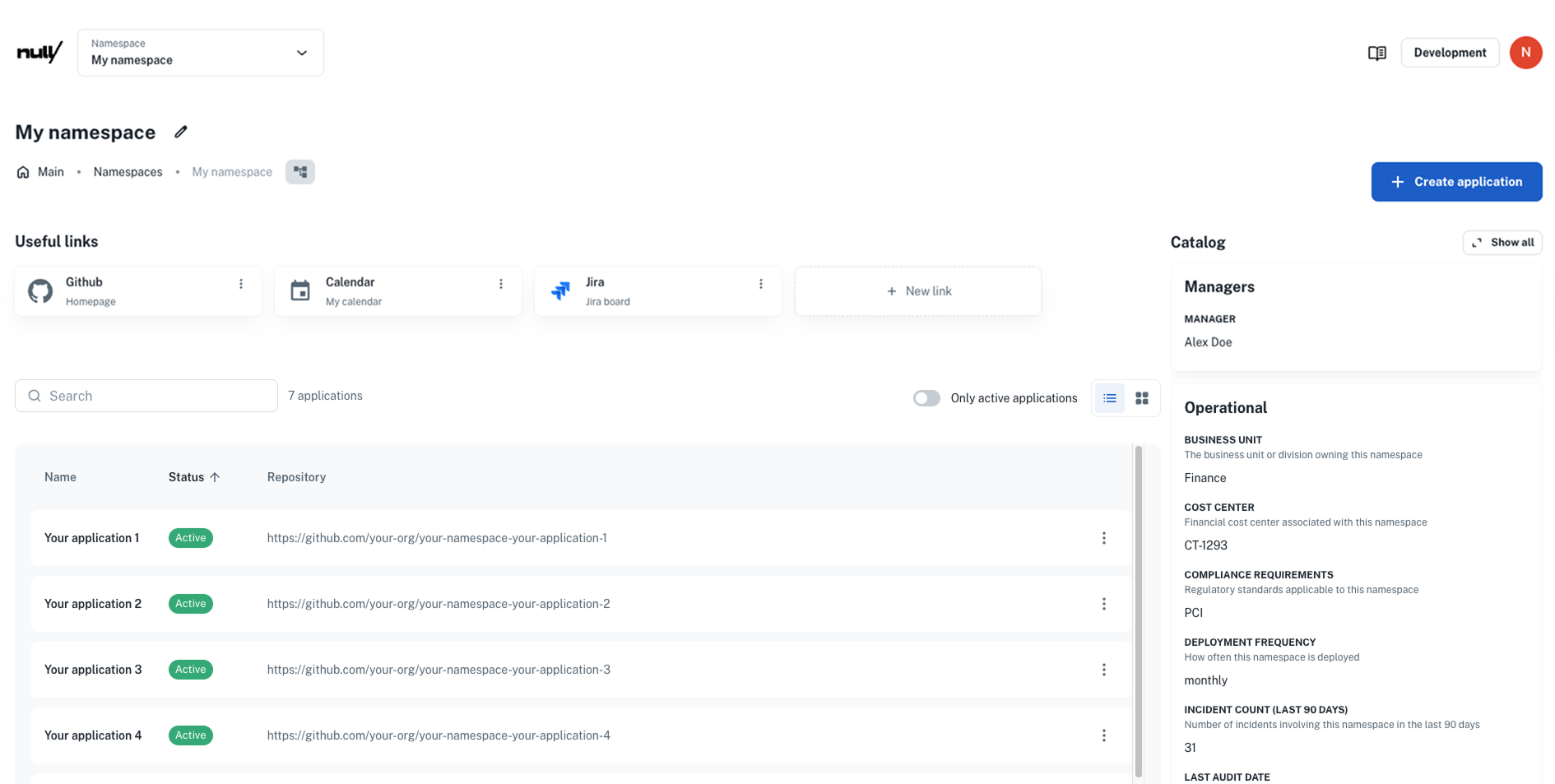
✨ Sync service instances effortlessly
Need to promote updates, roll back changes, or fix drift between environments? You can now sync one service’s config with another, right from the UI.
Perfect for keeping dev, staging, or prod environments aligned without doing it all manually.
How it works:
- Go to Development > Services and open the service to update
- Click Manage > Sync service with another
- Pick a target service and select the fields to apply
- Review the diff and click Create service
👉 Learn more in our Sync services docs.
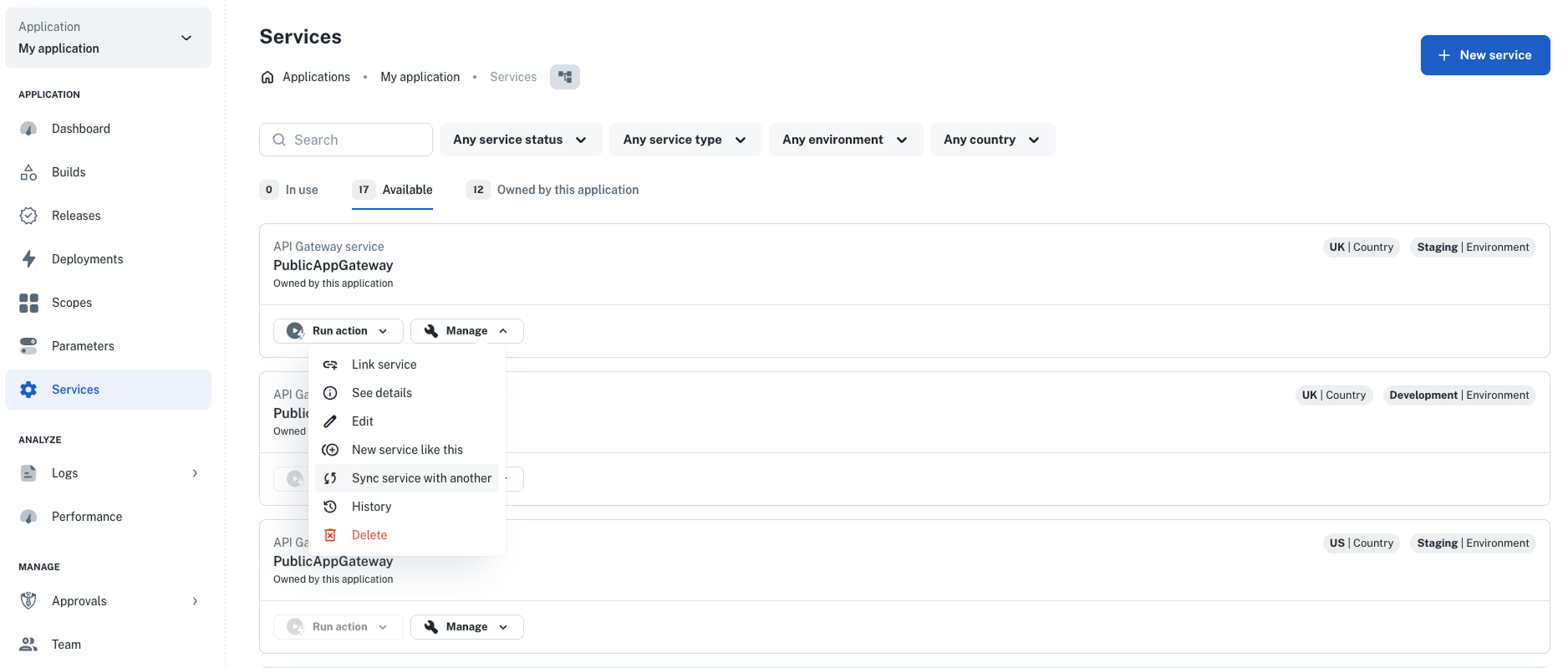
✨ Import existing services directly from the UI
You can now import a service that already exists directly from the UI—making it easier to register pre-existing cloud resources without using the API or CLI.
Instead of triggering provisioning actions, this flow allows you to define where the service is available across your organization by associating it with specific entities like namespaces or individual applications.
How it works:
- Go to Platform settings > Services > + New service
- Select the service specification
- Configure service visibility (e.g., at the namespace or application level)
- Click Create service
Once created, the imported service will appear in the Development > Services view for the applications you selected.
👉 Learn more in Importing existing services.
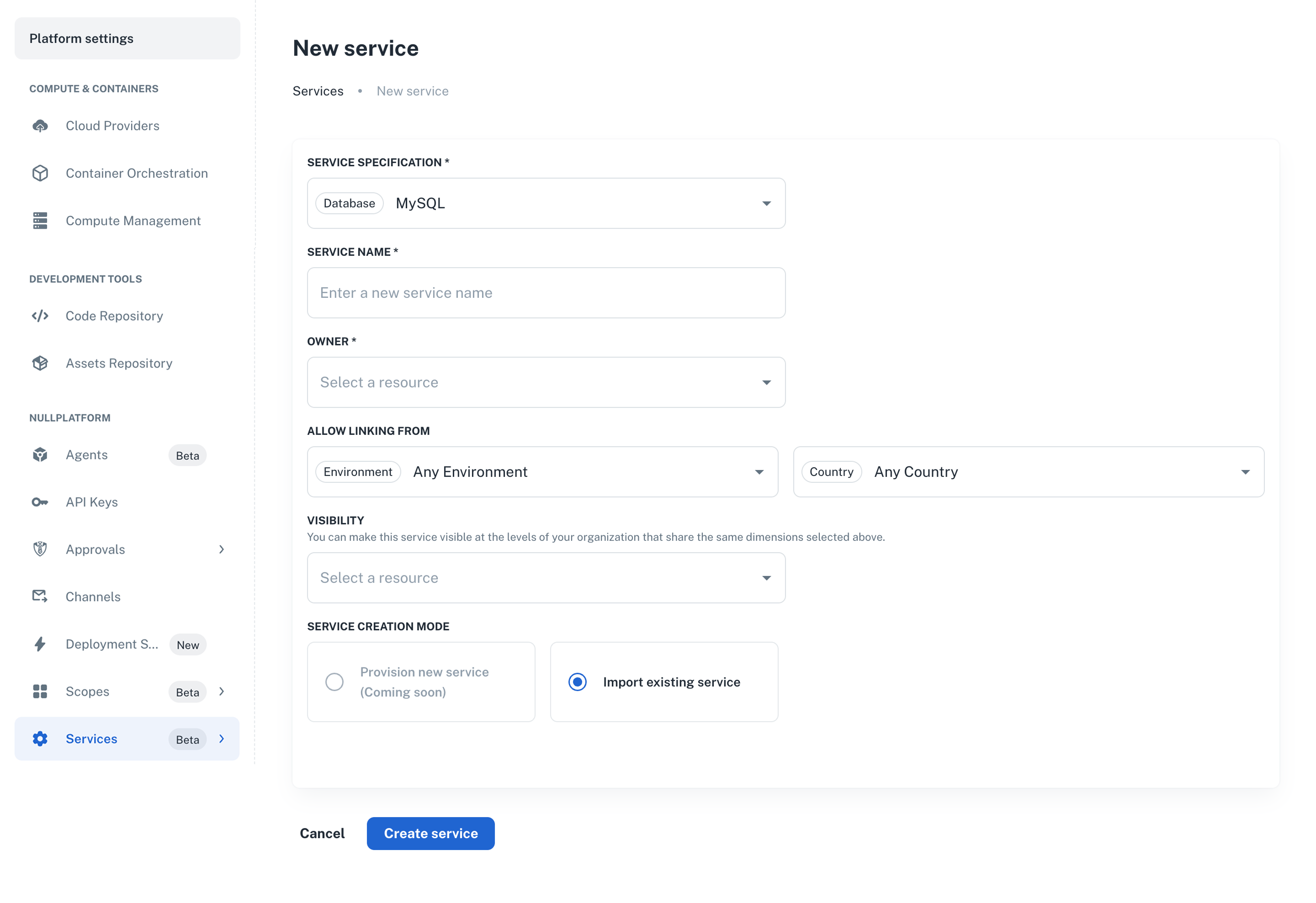
✨ Retry failed service actions in one click
You can now retry a failed service workflow directly from the UI. Previously, retrying required a POST request to the Create a service action endpoint.
How it works:
- Go to Development > Services.
- Click Manage > History to view the service that failed.
- Click Retry to re-run the action with the same inputs.
This is especially useful for failures caused by flaky networks, temporary resource issues, or cloud provider hiccups.
👉 Learn more about retryable actions in our docs.
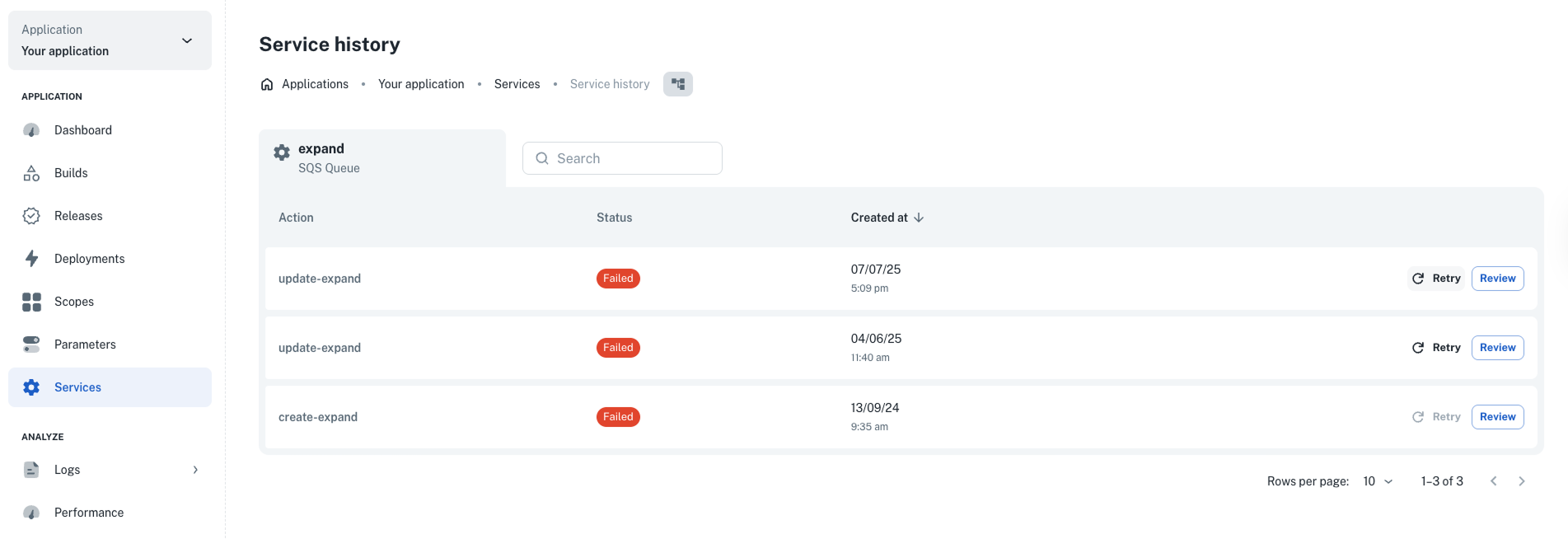
✨ Clear feedback when applications fail to create
We’ve improved how the platform handles application creation errors—so you’ll know exactly what went wrong. Now, if something fails (like an expired token or an invalid ECR policy), the UI will show clear and actionable error messages to help you troubleshoot faster.
How it works:
When an application fails to create, click the ⋮ menu next to it and select See logs. You’ll now see detailed logs that explain the issue. For example:
ERROR - Request failed with status code 401 – response: {"error":"invalid_token","error_description":"Token is expired.
You can either do re-authorization or token refresh."}
This makes it much easier to diagnose and fix configuration or environment issues without guesswork.
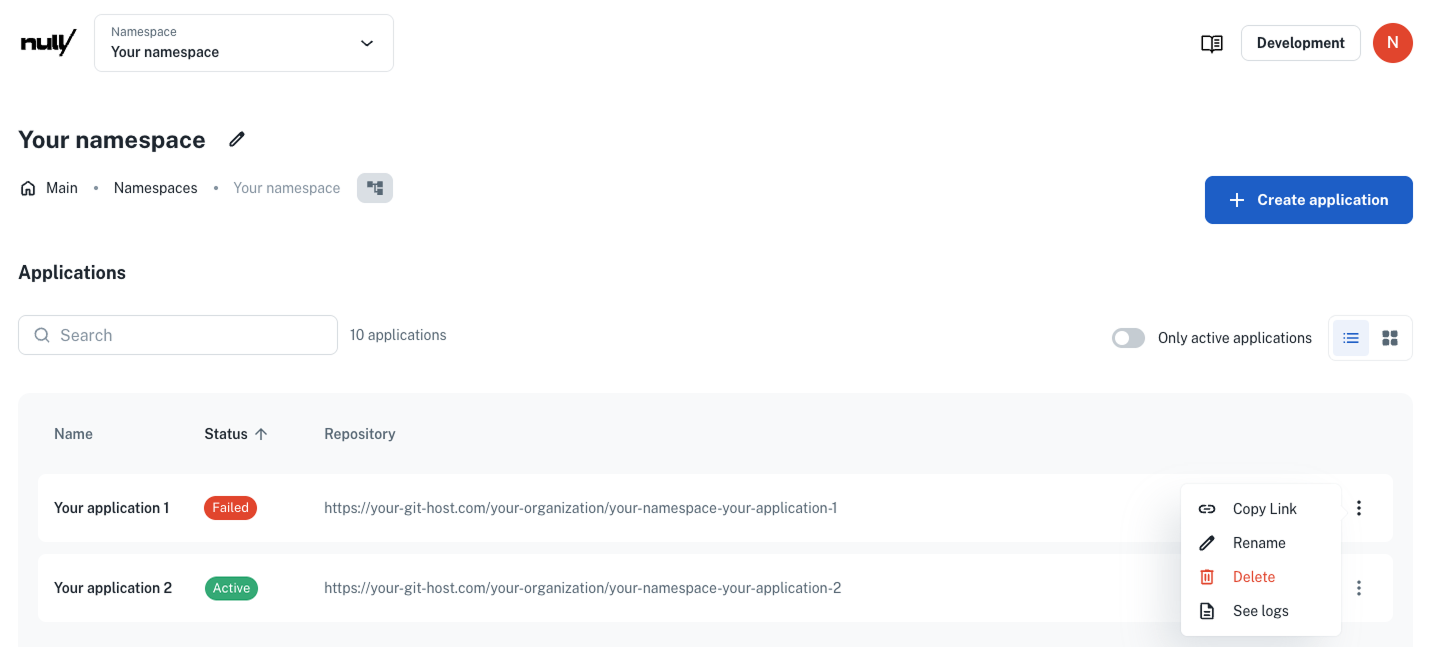
✨ CLI updates
We’ve released version 2.0.0 of the nullplatform CLI—bringing structural improvements, new features, and some
breaking changes.
⚠️ This is a major version release: specification-related commands have been replaced by the nested format introduced in version
1.3.0.
Breaking changes
- The following commands have been removed:
np service-specificationnp action-specificationnp scope-specification
Use the nested format instead (e.g.,
np service specification).
- The commands
np category readandnp category listhave been renamed to:np provider category readnp provider category list
Other improvements
- You can now filter providers by category when listing them.
- The
np service workflow build-contextcommand now auto-selects the most specific provider when multiple options are available.
👉 See the CLI docs for more info.
Wishing you a fantastic month ahead – from the nullplatform team! ❤️